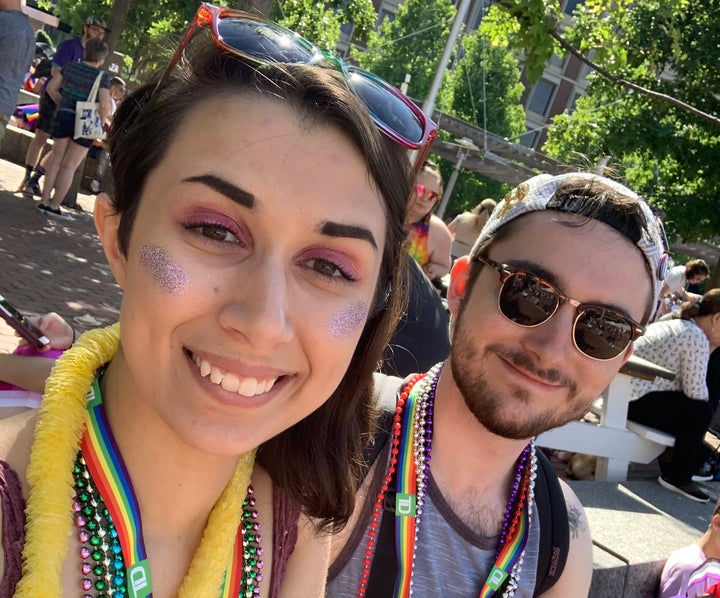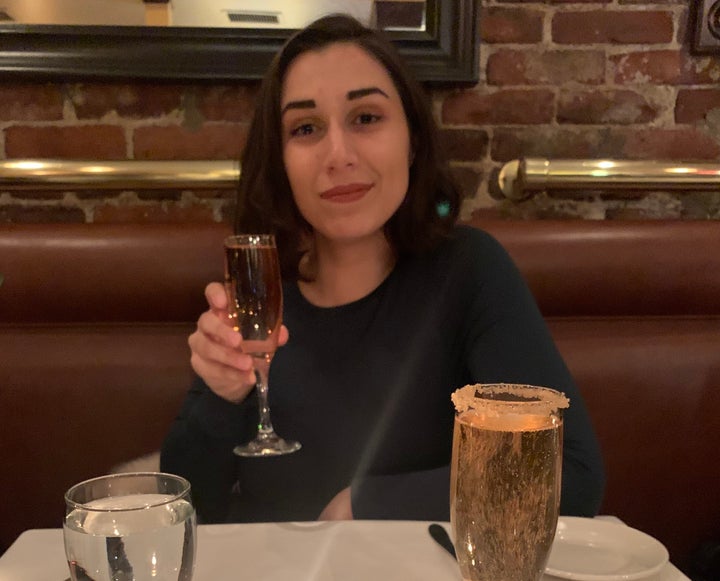
Like many queer young people, I didn’t learn about spectrums of gender and sexuality at school or from my parents. Instead, I learned about LGBTQ communities and identities on the internet – specifically, on Tumblr.
When I first encountered a post defining non-binary genders, I didn’t immediately recognise that this could be my identity, but it did plant the seed in my mind. I spent months wrapping my chest with scarves and layered sports bras, trying to make the body in the mirror match how I felt inside. But nothing quite fit the bill.
The internet produced very homogenous images of what ‘non-binary’ looked like: white, skinny, flat-chested, short hair. So naturally, I assumed that’s what I needed to look like to be taken seriously as a member of the community – even though androgyny seemed fundamentally incompatible with my olive brown skin, ponytail, and D cups.
“I cut my hair, tried dressing more androgynous, and wore my binder, but it still didn’t fix my confusion.”
I saw non-binary people wearing masculine clothes like button down shirts and slacks, and I mourned for my closet full of dresses. I had never resented skirts or dresses, or hated the idea of wearing them; in fact, I loved the way they twirled out when I spun, and flowed behind me as I ran down stairs. But the internet pushed me towards androgyny, and I was desperate to fit in. I purchased a binder in high school, and while it did make me feel slightly more valid, it wasn’t an immediate cure-all.
I couldn’t pinpoint it at the time, but my dysphoria didn’t just come from my physical appearance – it came from knowing that everyone I interacted with all day perceived me as a woman, so I couldn’t stop seeing myself that way either. I cut my hair, tried dressing more androgynous, and wore my binder, but it still didn’t fix my confusion. I even tried going by a different name, since Abigail (or Abby) seemed too feminine.
By the time I reached college, I learned that my gender was more fluid than fixed. On any given day I tend to fluctuate between feeling more masculine and feminine; some days my binder helps alleviate feelings of dysphoria, but most of the time I just wear a bra.
But up until last year, I still constantly felt the need to prove my gender through my appearance. Every non-binary student I met in my first year of college fit that Tumblr aesthetic I was used to, and I was scared no one would take me seriously when I asked to be referred to as they. So naturally, I felt I absolutely had to look androgynous for the biggest LGBTQ celebration of the year, no matter how I was feeling internally.

Pride often unnecessarily becomes a contest of seeing who can display their gender or sexual identity in the most obvious way. And while there is some fun to dressing up and being able to go out in crazy outfits, the fact of the matter is that if I show up to Pride in a bra and a tank top, I am just as genderfluid as I am wearing my binder and a button down. Pride should be a time for us to unapologetically be ourselves, not just in defiance of hetero- and cis-normative culture, but to truly just be comfortable and not feel the need to perform.
As I spent more time at school, I met other trans and non-binary students who didn’t adhere to strict gender norms; one night, a friend stumbled up to me at a bar and told me that I had been an inspiration to them for not feeling the need to dress androgynous to match my pronouns.
The mental shift I made was being able to know that despite what others might assume when they look at me, I know that my gender is real and valid, and I don’t owe anyone some arbitrary, narrow concept of what my gender should look like. Non-binary genders have been around for thousands of years, and no one would say that non-binary people throughout history weren’t valid because they don’t fit the standard of our current moment.
“If we police identity by appearance within our own community, we’re impeding our own progress.”
This holds true for all identities that fall under the LGBTQ umbrella. There shouldn’t be a required aesthetic to be able to call yourself gay, lesbian, bisexual, or anything else. That said, changing your appearance can be affirming and validating for many people in a positive way: such as trans people receiving gender affirming surgery, or lesbians identifying with butch or femme aesthetics.
But predetermined ideas of what it means to ‘look’ queer cannot be the universal standard. If we police identity by appearance within our own community, we’re impeding our own progress towards a future where queer people of all genders and sexualities are free to explore, experiment, and comfortably discover their own unique identity.
Abigail Hadfield is a freelance writer and editor
Have a compelling personal story you want to tell? Find out what we’re looking for here, and pitch us on ukpersonal@huffpost.com